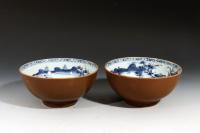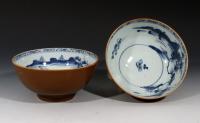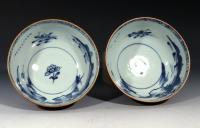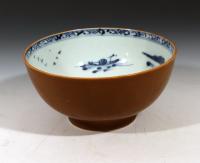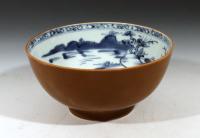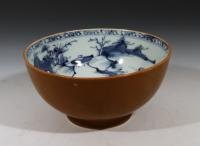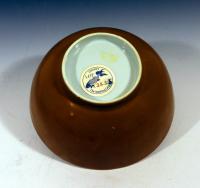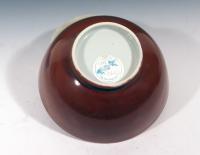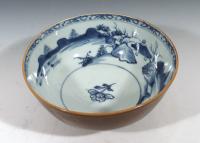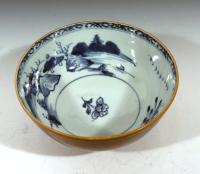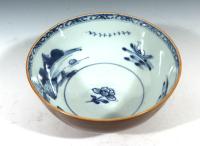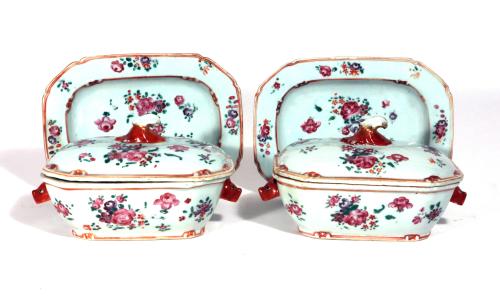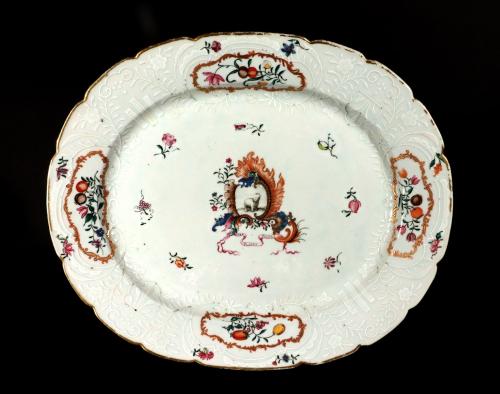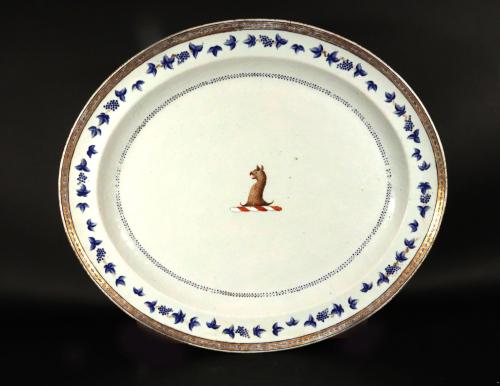
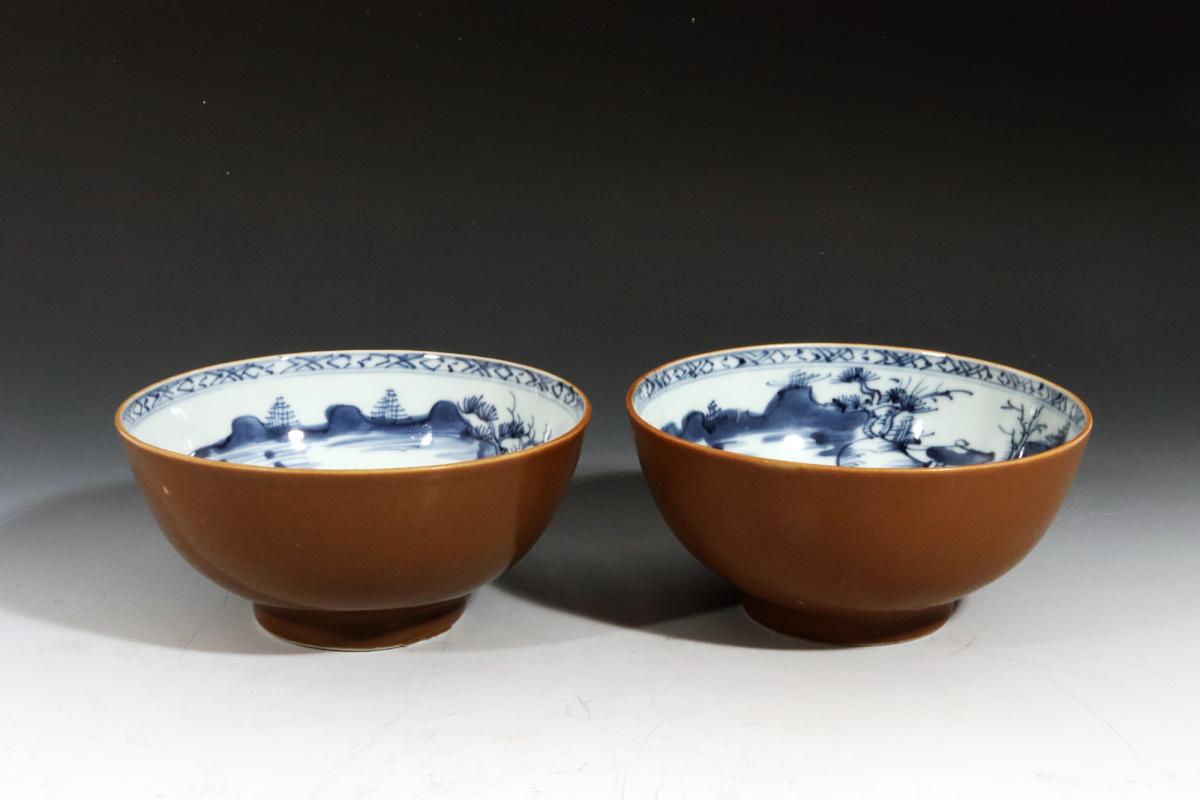
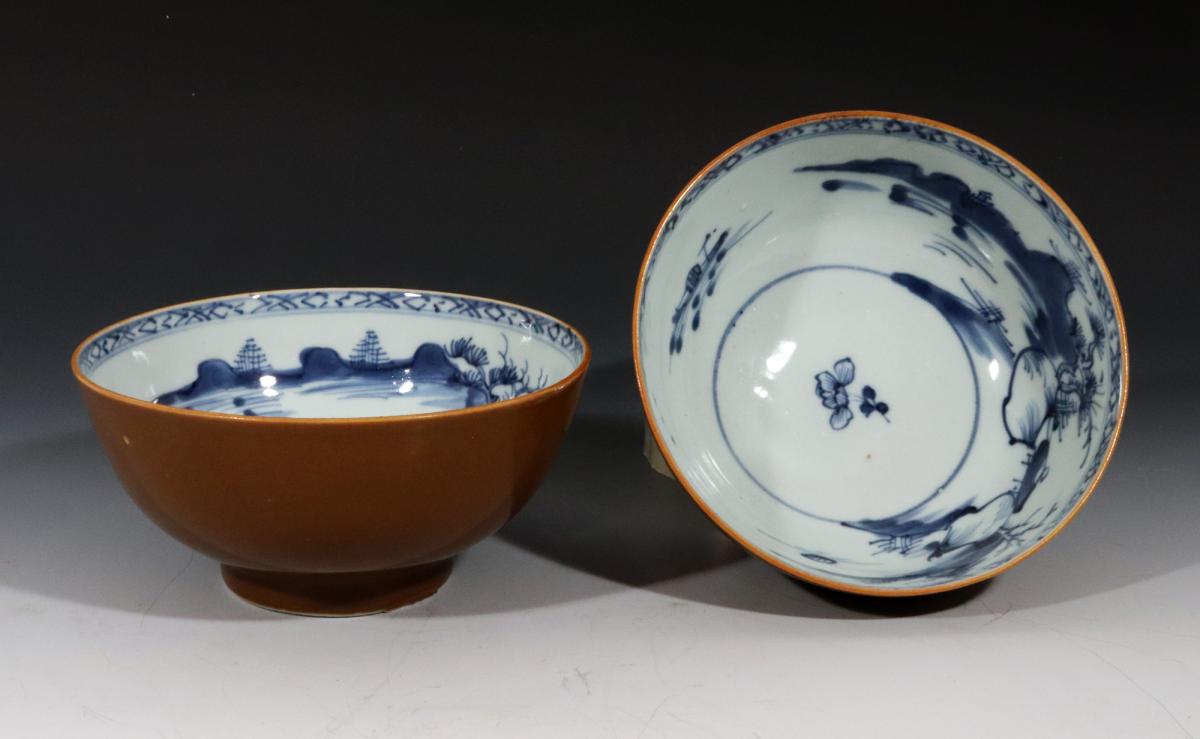
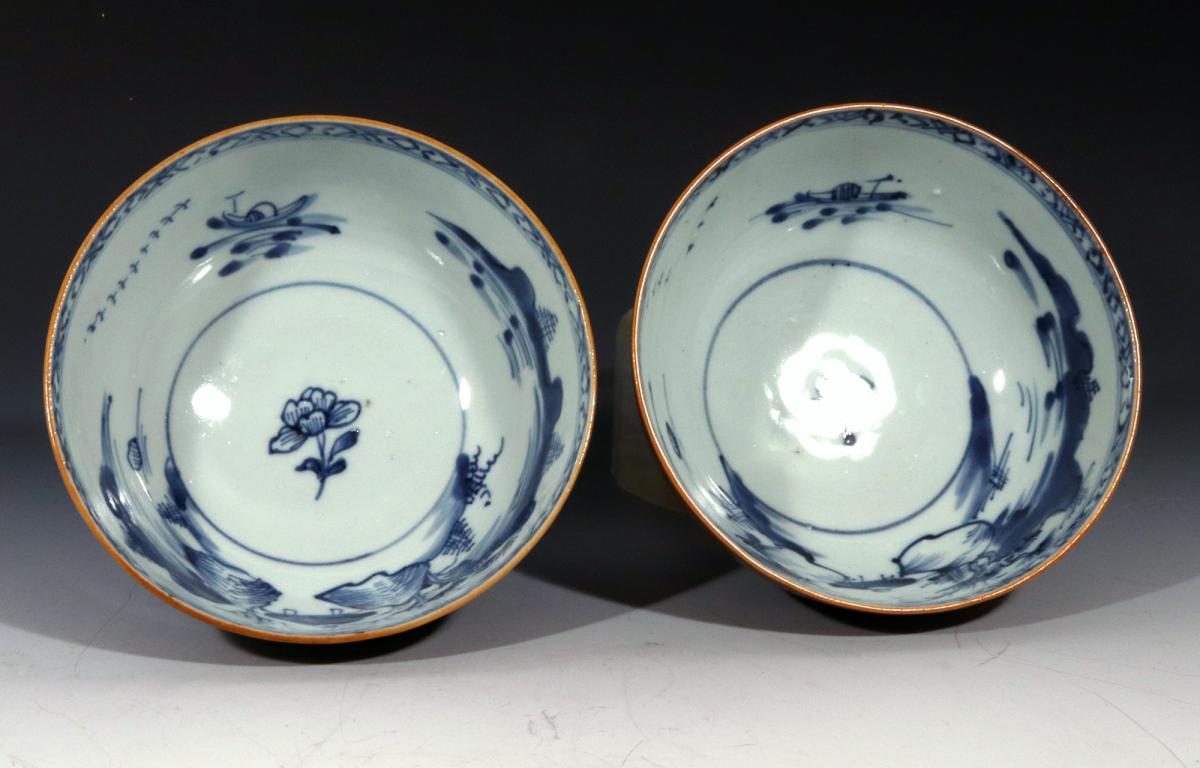
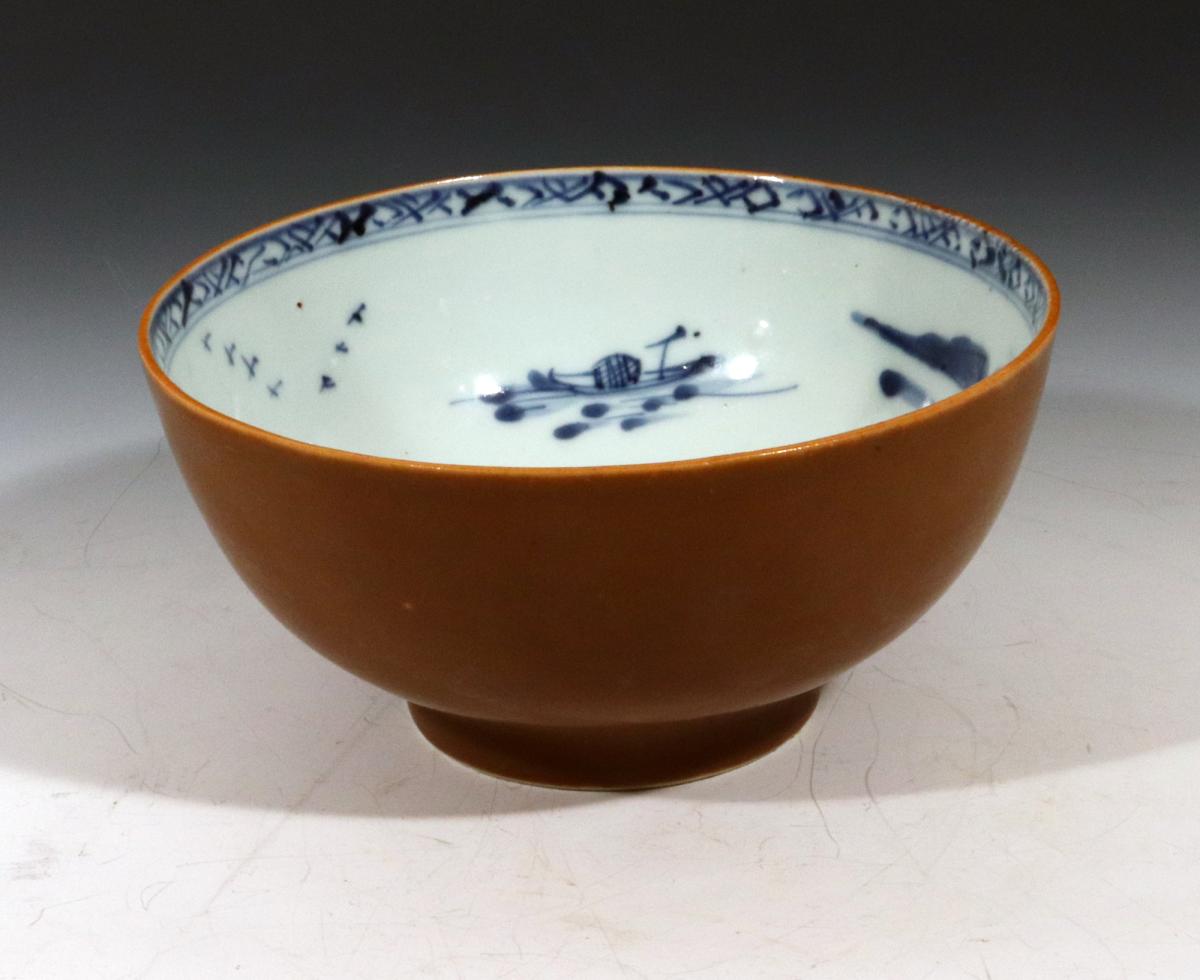
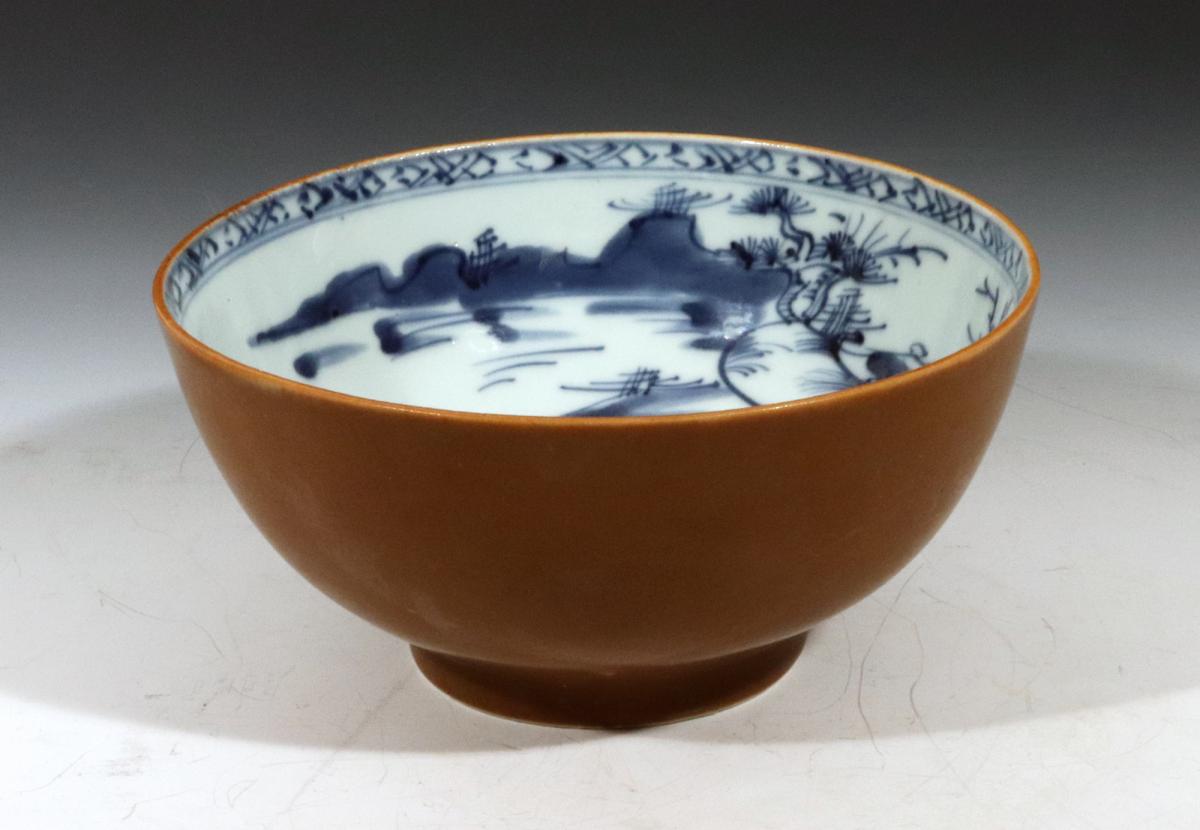
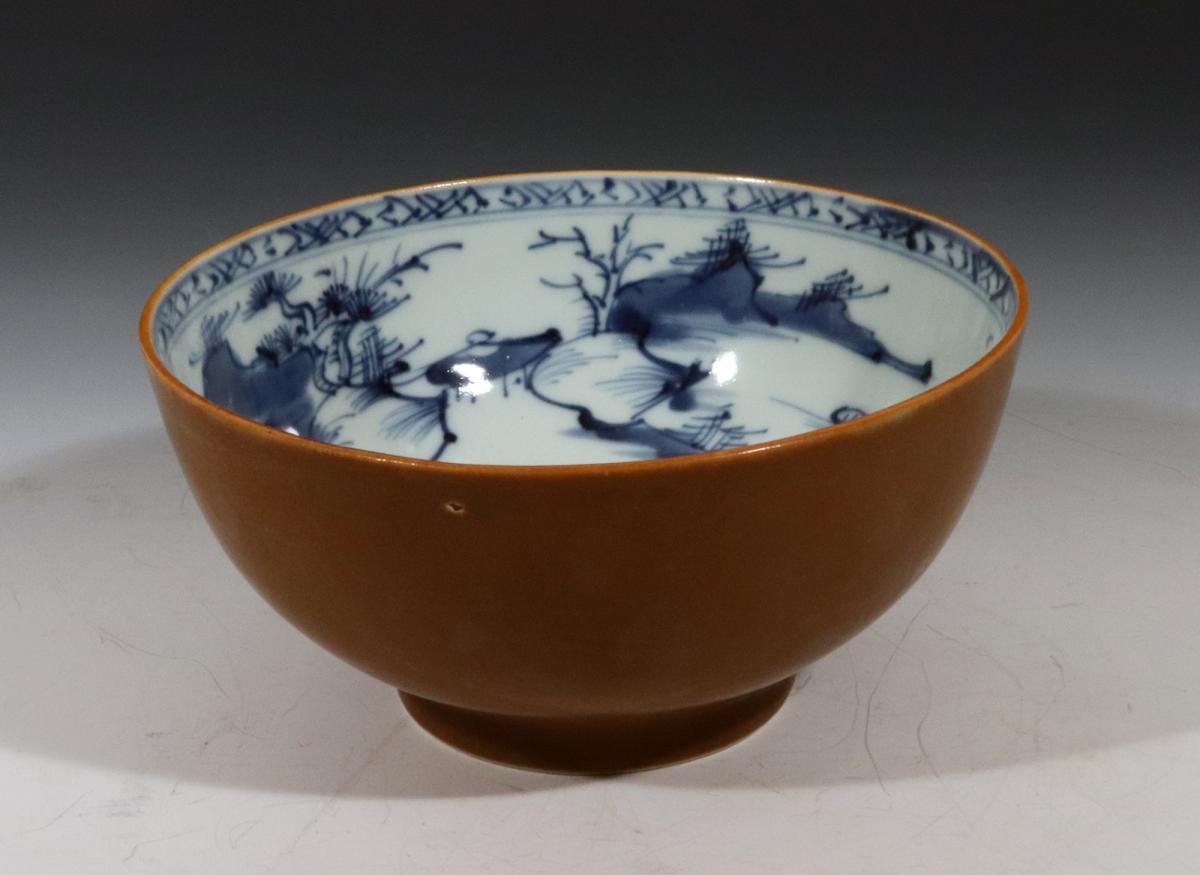
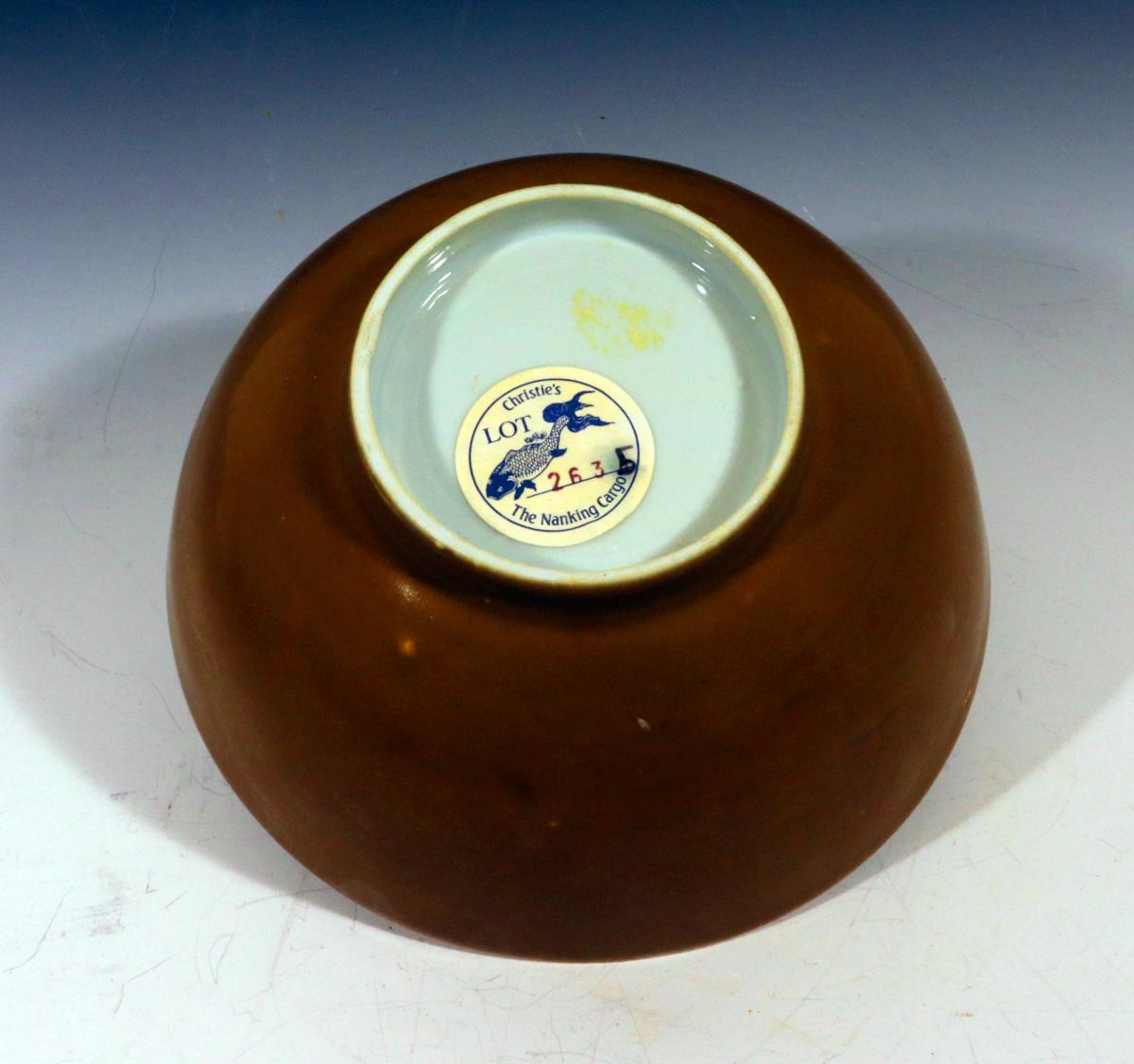
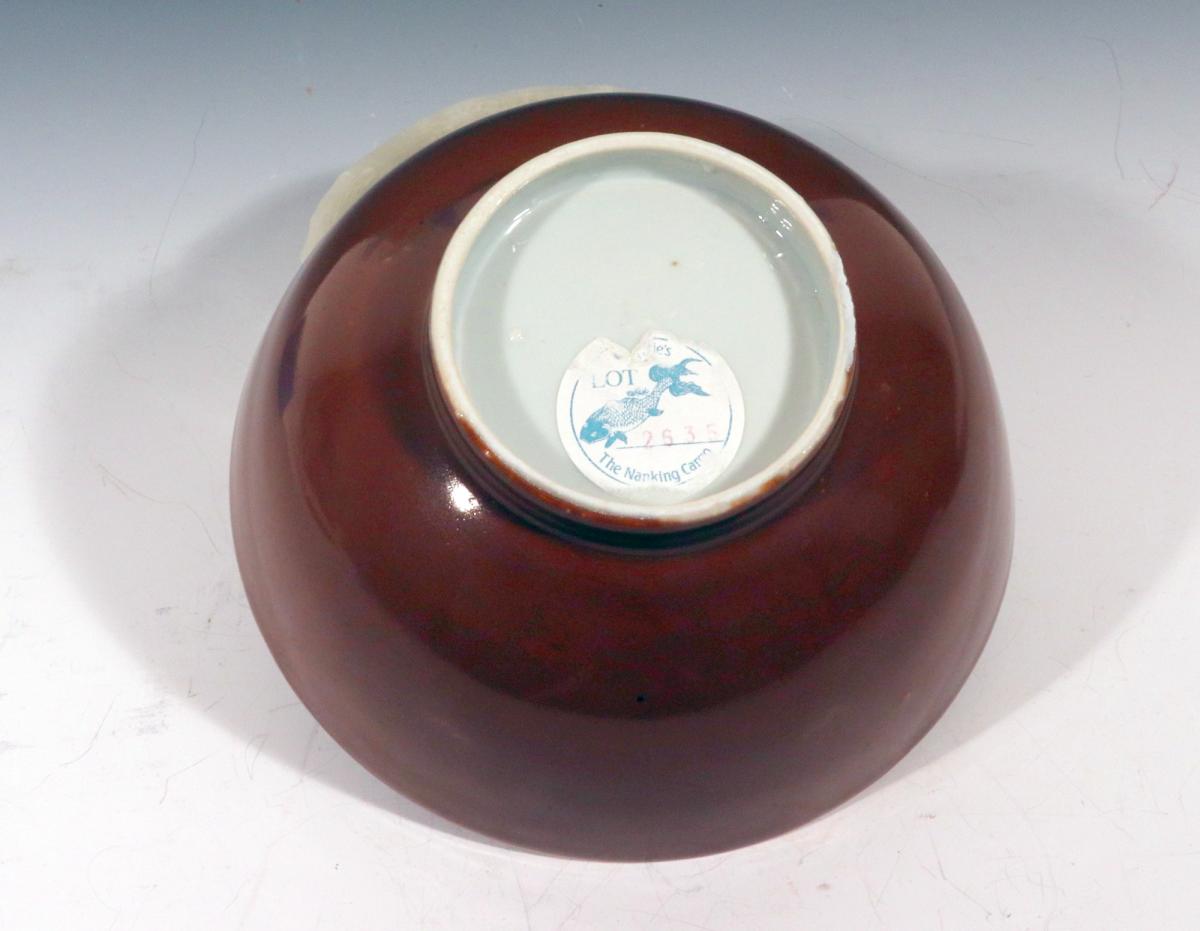
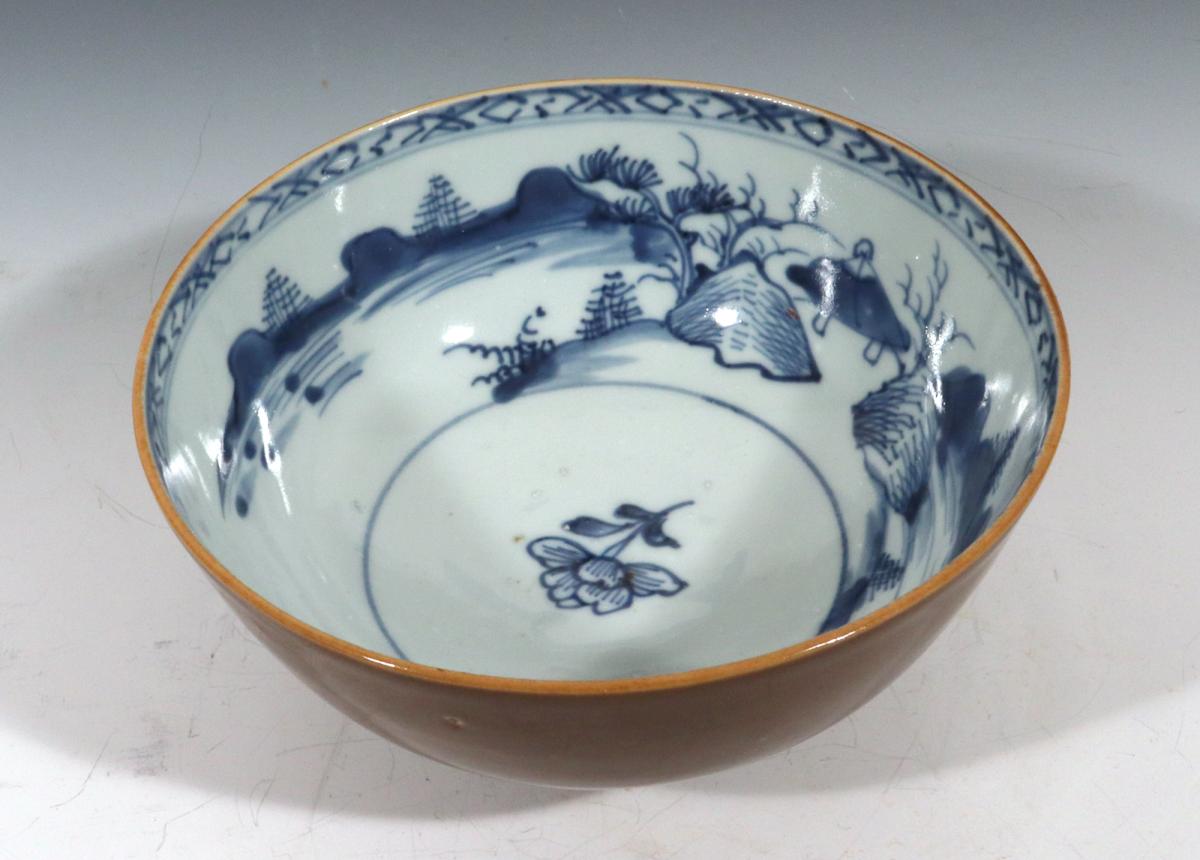
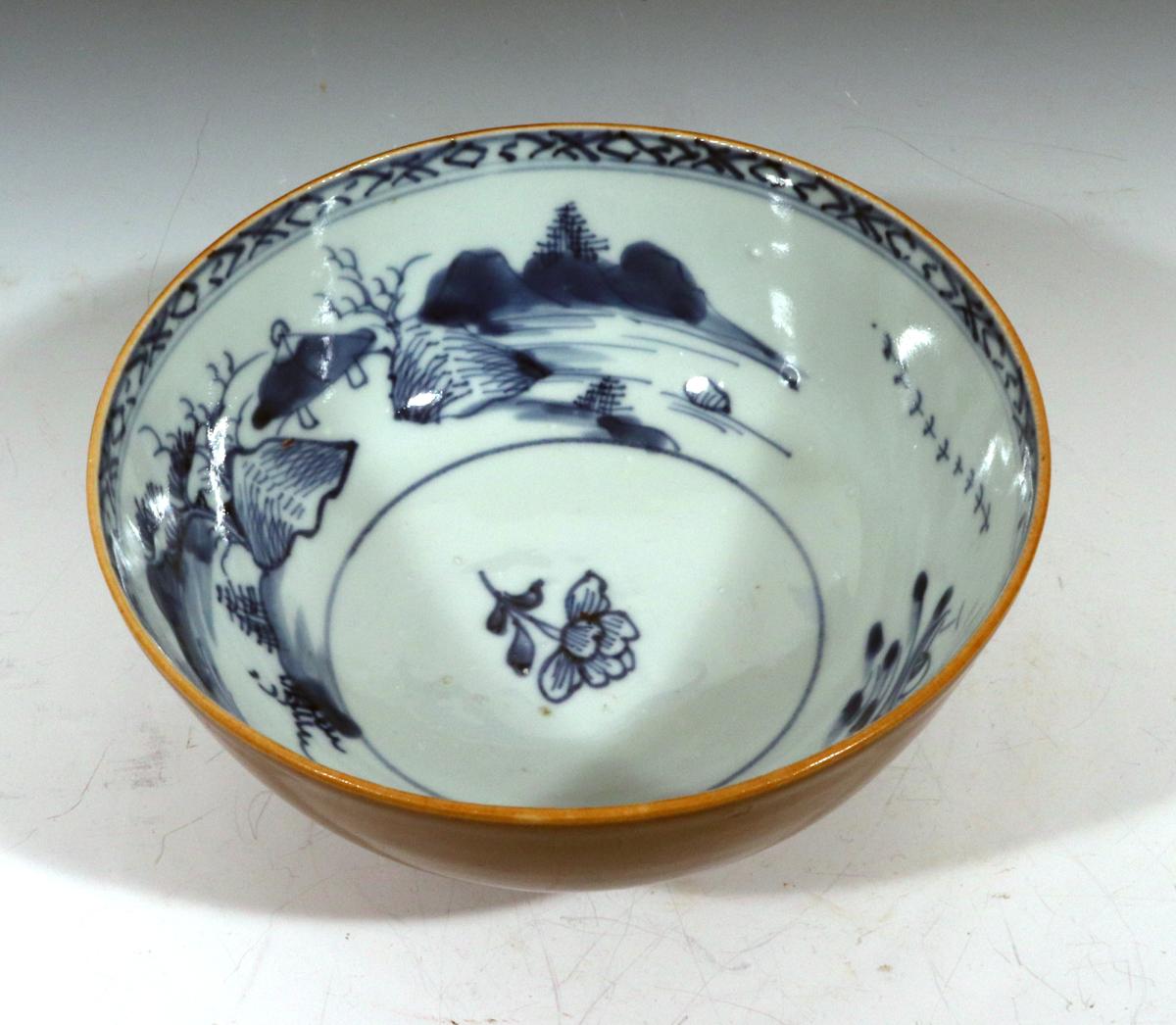
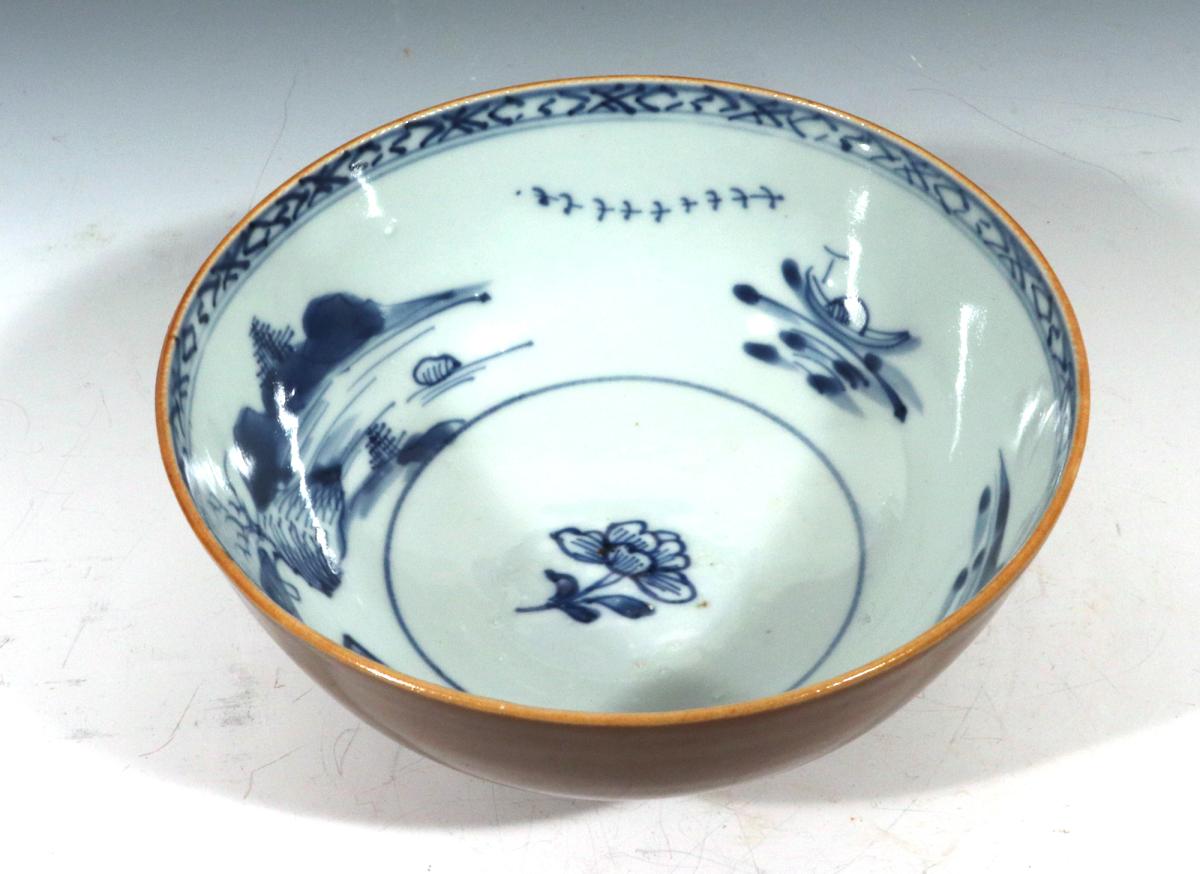
This object is eligible for a Certificate of BADA Provenance
The BADA Standard
- Since 1918, BADA has been the leading association for the antiques and fine art trade
- Members are elected for their knowledge, integrity and quality of stock
- Our clients are protected by BADA’s code of conduct
- Our dealers’ membership is reviewed and renewed annually
- Bada.org is a non-profit site: clients deal directly with members and they pay no hidden fees
Nanking Cargo Chinese Export Porcelain Cafe au Lait and Blue Pair Bowls.
The Chinese Export porcelain bowls are painted with a Cafe au Lait, Batavia-ware brown ground. The interiors are painted in underglaze blue with a wide scene that covers three quarters of the interior. It depicts mountains and trees by a river. Opposite is a stylized boat transporting a large barrel or bale of fabric.
Dimensions: 6 inches diameter x 2 7/8 inches high.
Paper Label:
Christie's/ Lot 2635/ The Nanking Cargo.
The Nanking cargo and the shipwreck of the Geldermalsen.
The term ‘Nanking cargo’ refers to porcelain recovered from a specific Dutch East India Company merchant ship, the Geldermalsen. Built in 1747, the Geldermalsen arrived in Canton (Guangzhou) on July 21, 1751. The ship was fully loaded with a variety of Chinese goods, and departed for the Netherlands on December 18 of the same year. After only 16 days at sea, the ship sank on January 3, 1752 in the South China Sea.
The shipwreck was found in 1985 by British-born salvage expert Michael Hatcher, who was able to surface over 100,000 pieces of Chinese porcelain along with 125 pure gold ingots. The haul was brought to Amsterdam—only 235 years late—where it was auctioned by Christie’s in 1986. The collection performed extremely well at auction, owing to both the romance of recovered treasure and the excellent condition of the pieces. It seems nothing short of miraculous that porcelain left under the sea for hundreds of years could be in impeccable condition. Before being loaded onboard the Geldermalsen, these wares had been packed in tea, which would have provided a valuable second cargo for the Dutch East India Company, and had the unintended side effect of protecting the porcelain from the ravages of salt and sand. It is also worth mentioning that their survival is also due to the virtuosity of Chinese craftsmanship and techniques. The majority of the recovered Nanking cargo pieces are of the blue-and-white type.
(The Nanking cargo and the shipwreck of the Geldermalsen)
The term ‘Nanking cargo’ refers to porcelain recovered from a specific Dutch East India Company merchant ship, the Geldermalsen. Built in 1747, the Geldermalsen arrived in Canton (Guangzhou) on July 21, 1751. The ship was fully loaded with a variety of Chinese goods, and departed for the Netherlands on December 18 of the same year. After only 16 days at sea, the ship sank on January 3, 1752 in the South China Sea.
The shipwreck was found in 1985 by British-born salvage expert Michael Hatcher, who was able to surface over 100,000 pieces of Chinese porcelain along with 125 pure gold ingots. The haul was brought to Amsterdam—only 235 years late—where it was auctioned by Christie’s in 1986. The collection performed extremely well at auction, owing to both the romance of recovered treasure and the excellent condition of the pieces. It seems nothing short of miraculous that porcelain left under the sea for hundreds of years could be in impeccable condition. Before being loaded onboard the Geldermalsen, these wares had been packed in tea, which would have provided a valuable second cargo for the Dutch East India Company, and had the unintended side effect of protecting the porcelain from the ravages of salt and sand. It is also worth mentioning that their survival is also due to the virtuosity of Chinese craftsmanship and techniques. The majority of the recovered Nanking cargo pieces are of the blue-and-white type.
The Nanking cargo and the shipwreck of the Geldermalsen
The term ‘Nanking cargo’ refers to porcelain recovered from a specific Dutch East India Company merchant ship, the Geldermalsen. Built in 1747, the Geldermalsen arrived in Canton (Guangzhou) on July 21, 1751. The ship was fully loaded with a variety of Chinese goods, and departed for the Netherlands on December 18 of the same year. After only 16 days at sea, the ship sank on January 3, 1752 in the South China Sea.
The shipwreck was found in 1985 by British-born salvage expert Michael Hatcher, who was able to surface over 100,000 pieces of Chinese porcelain along with 125 pure gold ingots. The haul was brought to Amsterdam—only 235 years late—where it was auctioned by Christie’s in 1986. The collection performed extremely well at auction, owing to both the romance of recovered treasure and the excellent condition of the pieces. It seems nothing short of miraculous that porcelain left under the sea for hundreds of years could be in impeccable condition. Before being loaded onboard the Geldermalsen, these wares had been packed in tea, which would have provided a valuable second cargo for the Dutch East India Company, and had the unintended side effect of protecting the porcelain from the ravages of salt and sand. It is also worth mentioning that their survival is also due to the virtuosity of Chinese craftsmanship and techniques. The majority of the recovered Nanking cargo pieces are of the blue-and-white type.
(https://www.waddingtons.ca/chinese-export-porcelain-and-the-nanking-cargo/)
(Ref: NY10223-lmrx)
Dimensions
15.24cm x 8.57cm highCondition report
ExcellentStock number
NY10223-lmrxThe BADA Standard
- Since 1918, BADA has been the leading association for the antiques and fine art trade
- Members are elected for their knowledge, integrity and quality of stock
- Our clients are protected by BADA’s code of conduct
- Our dealers’ membership is reviewed and renewed annually
- Bada.org is a non-profit site: clients deal directly with members and they pay no hidden fees


